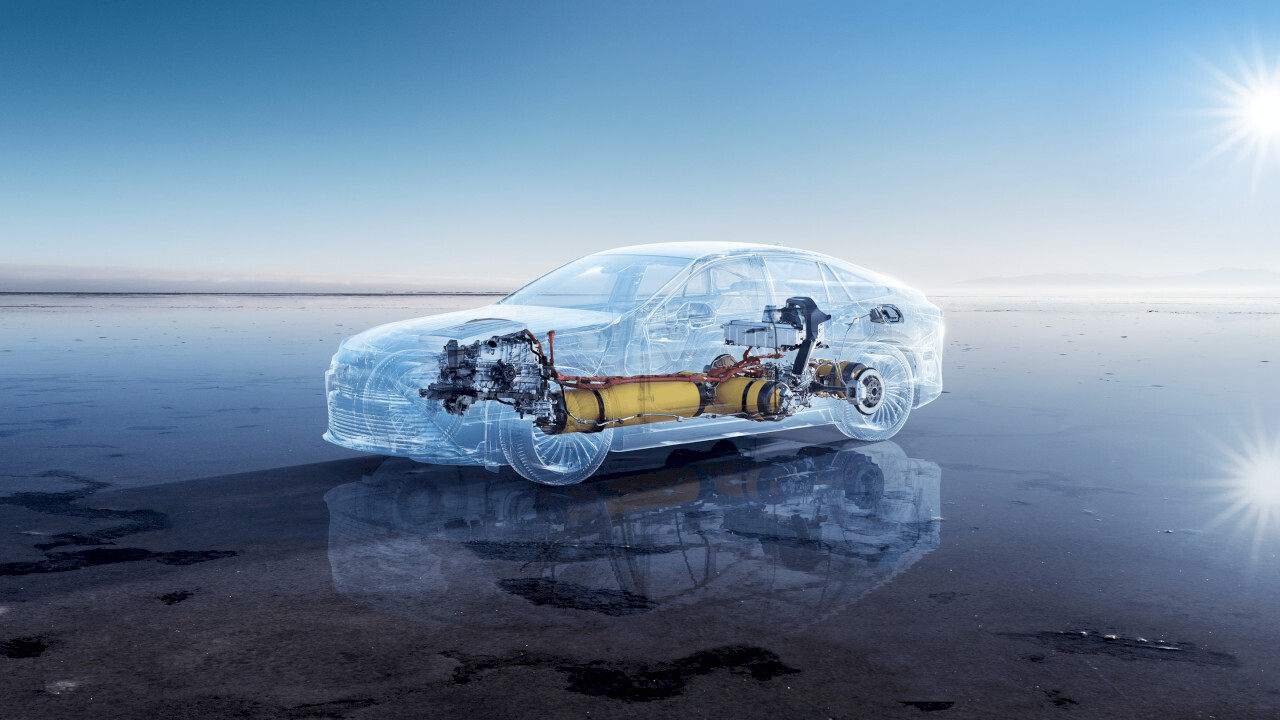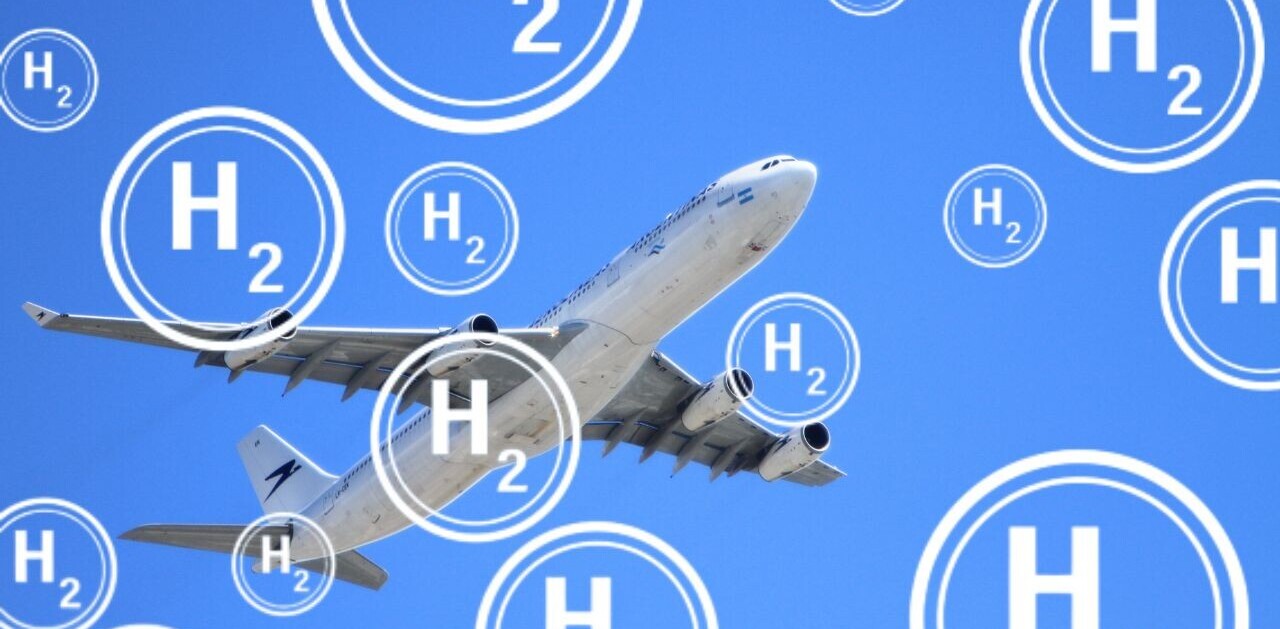Around the world, governments are implementing policies to promote electric vehicles to reduce oil consumption, climate-related emissions and improve local air quality. Most of the attention is on plug-in electric vehicles.
But there’s another option, Hydrogen Fuel Cells (HFCs), an electrochemical power generator that combines hydrogen and oxygen to produce electricity, with water and heat as byproducts.
HFCs form energy that OEMs can use to power anything from commercial vehicles to forklifts and drones.
How do Hydrogen Fuel Cells work?

The hydrogen in the fuel tanks travels to the fuel-cell stack. Inside the stack, the hydrogen undergoes an electrochemical reaction with oxygen that’s collected through the air intake. This process generates electricity which either directly powers the motor or is stored in the battery for future use.
Hydrogen Fuel Cell vehicles are similar to electric vehicles (EVs) in that they use an electric motor instead of an internal combustion engine to power the wheels. However, while EVs run on batteries that rely on a plug-recharge, HFC vehicles generate their electricity onboard.
A HFC vehicle needs to be pumped up with hydrogen at a specialist filling station.
The value of HFC vehicles
As a form of energy, hydrogen fuel cells have a lot going for them:
- An as element hydrogen is abundant.
- Hydrogen can be used in rockets, ships, planes, cars, trucks, buses, and other vehicles and as an energy source to power buildings.
- When fueled with pure hydrogen, HFC’s only byproducts are heat and water, making them a zero-emission sustainable power source.
- Hydrogen fuel cells are generally between 40-60% energy efficient. A typical internal combustion engine of a car is about 25% energy efficient.
- HFC vehicles are refilled with Hydrogen at refilling stations. Refilling takes about 3-5 minutes for over 300 miles of travel. Comparatively, a Tesla supercharger takes 15 minutes to recharge up to 200 miles, and other rapid chargers take at least 30 minutes to charge 80%.
- Handled correctly, hydrogen is safer to use than conventional fossil fuels. If a leak occurs, lighter-than-air hydrogen gas rises and disperses rapidly. This non-toxic gas is also safe to breathe.
Hydrogen startups are abundant
There are well over 300 startups (many University offshoots) accelerating growth in green hydrogen and hydrogen fuel cells. 
Notable startups include:
There’s strong government and commercial commitment to HFCs. This will result in rapid growth in green hydrogen, hydrogen pipelines, broader use cases, and fuel cell innovation. Hydrogen fuel cells are not going anywhere fast.
Barriers to mainstream adoption
However, HFCs face significant barriers before mass adoption becomes a reality (if ever):
- Extracting hydrogen from a water molecule is an energy-intensive process that generates greenhouse gas emissions if renewable energies are not used. Currently, less than 1% of hydrogen produced is green, but this is improving.
- Hydrogen is expensive to transport to fueling stations.
- While HFC vehicles need fewer public refueling stations than EVs, there aren’t all that many. However, their numbers are increasing.
- Comparably, EV owners can charge their vehicles at home with the right setup.
- There’s lots of failures, like truck startup Nikola, whose founder was indicted on charges of lying to investors and securities fraud, which included pushing a truck down a hill to pretend it was “fully operational.” Even at the 2021 Japan Olympics, which pledged to showcase the efficacy of Hydrogen, only a few buses on shorter routes used HFCs, and Hydrogen fuelled only one Olympic village.
Hydrogen Fuel Cell Electric Vehicles on the market now
Most OEMs have invested in HFC vehicles, with a number of releases over the last few years. Notable examples include:
- BMW i Hydrogen NEXT
- Honda FCX Clarity
- Hyundai Nexo
- Hyundai ix35 FCEV
- Mercedes Benz F-Cell
- Riversimple Rasa
- Toyota Mirai
Long haul transport is the future of HFCs at least for now
Hydrogen fuel cells are being rolled out across numerous transport verticals, including trains, trucks, and buses. These industries are all pushing to reduce their carbon impact. For example, in the US, transit agencies are required to transition to a zero-emission bus fleet by 2040.

Hydrogen fuel cells can generate more power when pulling heavier loads uphill than an equivalent-sized lithium-ion battery and offer a greater range. Hyundai’s Xcient Fuel-Cell trucks feature a 190-kilowatt fuel cell comprised of seven high-pressure tanks holding around 35kg of hydrogen.
The trucks have a long-distance range of about 400km before refueling is required, which far surpasses the capabilities of vehicles powered by electric batteries. The fuel cell can be charged in under 20 minus and drive for about 250 miles before needing more hydrogen.
Hyundai is investing heavily in hydrogen, planning to put 1,600 hydrogen trucks on Swiss roads by 2025, and set to launch similar projects in other European countries. The company has been renting its trucks to local companies in Switzerland for almost a year.
But c’mon are HFCs a fool errand?

Elon Musk is not a fan of hydrogen fuel cells, calling them ”fool sells” and “staggeringly dumb.” It’s hardly surprising since the Tesla empire is built on lithium-ion batteries.
It’s worth noting that HFC technology is still in its early stages, unlike EVs. But even electric cars took decades to go mainstream.
The technology has a way to go, particularly in obtaining and transporting hydrogen. It’s years away from mainstream adoption, especially in cars. HFCs are not a threat to electric vehicles, and I don’t believe we’ll ever see adoption overtake electric cars.
However, HFCs will remain relevant, particularly in long-distance transport such as freight trucks and trains. Whatever your view, governments are heavily invested in HFCs. This provides an opportunity to accelerate innovation, and we can expect to see a greater range of improved product offerings, both in development and at market.
Get the TNW newsletter
Get the most important tech news in your inbox each week.






